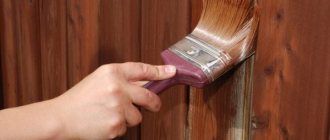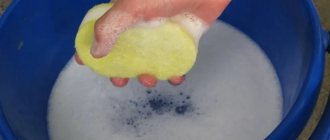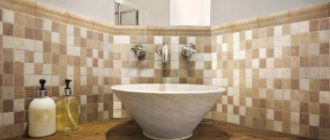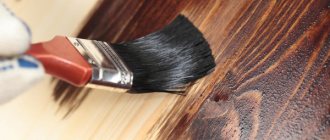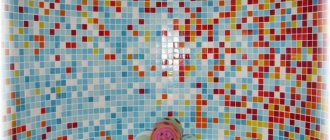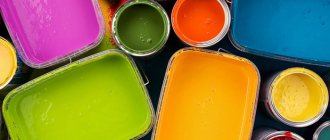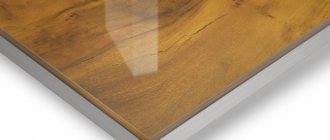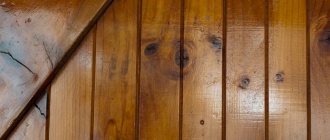Many people believe that alkyd and acrylic paint bases are the same in composition. This means that they can be easily combined and not be afraid of a chemical reaction. Basically, this myth developed due to externally similar names. But this opinion is wrong, the only thing they are similar in is that both bases are paints, their compositions are different. So is it possible to apply acrylic paint to alkyd paint? What are the main features of both colorants? You can learn about this and much more from this article.
Acrylic paint and its features
The main property of acrylic is the presence in its composition of solvents and polymers that are colored with pigment. The main indicator of high-quality acrylic is the expensive resin in the composition. The filler is ground sand or talc. But specialized solvents or purified water help speed up the drying of the enamel. The main properties of acrylic paints are:
- They do not change shade due to exposure to high temperatures, ultraviolet rays, and are also resistant to humidity.
- Dries quickly.
- Not hazardous if inhaled.
- They do not have a pungent odor.
Due to these properties, enamel protects products from rust, exposure to sunlight, and high temperatures. Acrylic can be used to cover both outdoor and indoor products. The main thing is to be able to thoroughly clean the surface from previous layers of coating, degrease and prime. Otherwise, there are no difficulties in applying this dye.
Acrylic paint
How to coat acrylic paint with varnish
Paint manufacturers do not recommend varnishing the surface of the car after applying acrylic enamel. Initially, this substance is based on various components, including resins. There are thermosetting and thermoplastic acrylic varnishes. The first option is used only for factory painting of a car, and the second can be used if you are going to cover the car body with acrylic yourself.
Acrylic car enamel dries quite quickly. It has high durability and reflective properties. To make the surface more even, it is necessary to apply acrylic varnishes in two layers. This will also make the shade more saturated and deeper.
Application of acrylic auto enamel
Alkyd paint and its properties
To create this type of enamel, a thick resin is used, and various solvents from refined petroleum products are added to the viscosity. The role of filler is played by finely ground sand, as well as granite chips crushed to dust. Unlike acrylic enamels, alkyd coating can be of several types: matte and glossy. When covering the surface with alkyd paint, you do not need to worry about the influence of external factors: the enamel will protect the product from snow, rain, and minor mechanical damage. This substance dries well, masks imperfections well, and can be used both outdoors and in a house or apartment. The advantages of such substances:
- Dries quickly.
- They are not subject to destruction after frequent exposure to the street, after exposure to rain, snow or hail.
- They do not streak, they lie flat on a previously cleaned, primed product.
- They are distinguished by a variety of shades for the palette.
Please note: Instructions for preparing chalk paint at home
Disadvantages of alkyd paint:
- Exposure to sunlight and high temperatures.
- They have a strong odor, and therefore it is necessary to apply enamel to a product or surface in a well-ventilated area or in the fresh air.
Alkyd matte paint
Varnishes for different types of paints
The varnish should be selected according to its compatibility with the paint. You also need to pay attention to the degree of its rigidity. According to these parameters, there are only two types:
- HS is a hard type that is applied in just one and a half layers. It will contain solid particles and is very economical to use;
- MS – soft in structure, applied in several layers (two or three). Since it spreads well, it must be applied carefully so that no streaks remain. It is better processed and polished.
Varnish marking
To paint a car, the technology of two-phase coating of the external body of the car is used. To do this, use a base coat and then apply varnish. It can be similar in properties to the coloring element or acrylic.
Now glyphthalic varnishes based on synthetic resins have become widespread. This enamel does not require the use of protective substances after coating the surface. This is an advanced paint product. It simultaneously gives the necessary shade and shine to the painted surface. The composition contains drying activators that react with paint elements only at certain temperatures. In this case, final drying will occur faster, and the protective layer will become more durable. When you cover the surface of a car with glyphthalic varnish, you should study the instructions, since this substance is sensitive to temperature conditions and manufacturers recommend different proportions of enamel dilution.
Cellulose varnishes are now practically not used, since they have low performance compared to other varnishes and enamels. The color of cellulose paint fades very quickly, and the shine of the car will be quite weak. If we talk about alkyd paints, then the corresponding alkyd varnish is used, which has the highest degree of compatibility.
Nitro enamels are rarely used because they have low weather resistance. It is used to repair individual parts and components of the car. And after drying the paint, it is necessary to apply a layer of varnish for fixation and shine.
Differences in paints
Before you understand whether it is possible to paint products coated with acrylic with alkyd paint, you need to understand the compatibility of these enamels.
- Acrylic paint bases last longer on the surface. Alkyd enamels are not so durable. And if the product or surface is cleaned and primed before painting, the coating will remain for more than 20 years. Surfaces coated with alkyds become unusable a year after the first painting.
- Acrylic is indifferent to the effects of ultraviolet rays. Under direct sunlight, the enamel does not peel, does not turn yellow, and does not lose transparency. The Alcides cannot boast of this.
- But alkyd paints dry faster. Therefore, they are indispensable for quick coloring. Unlike competitors, which only need two days to dry completely, acrylics dry for a month.
- Acrylics take a long time to dry, but during this process a film is formed that is more resistant to mechanical damage. Other coatings do not differ in such properties.
- Alkyd substances have a wide variety of shades, which is not typical for acrylic paints. If choosing non-standard colors is important, it is better to choose acrylic enamels.
Types of varnish by composition
- Acrylic-based varnish is safe and does not emit toxic substances harmful to health. This type of product is used for interior work, has a transparent appearance, can be applied to a wooden surface without changing its color, and dries quickly.
- Nitrovarnishes are also used for indoor work; they are toxic, so the coating is carried out in a protective mask. This product dries quickly.
- Alkyd types of varnish can be used for external and internal work. They contain resins and organic solvents. Such varnishes are water-repellent, can be used on various surfaces, and have a long drying time.
- For wood surfaces, universal type polyurethane varnishes are used; it protects the surface from mechanical action, that is, from scratches or failures.
- There are varnishes that are based on vegetable oil; they take a long time to dry and can give the wooden surface a yellowish or brownish tint.
- Epoxy varnish is resistant to moisture and mechanical damage, I use it inside and outside, it dries in about 12 hours.
Compatibility of both types of coloring enamels
Experienced craftsmen do not recommend experimenting with the application of paints that are not compatible in composition. Firstly, it can ruin the previously applied coating, it will swell, chips or dark spots will appear. Secondly, both types of enamels can enter into a chemical reaction, which can also end disastrously for the surface. It often happens that the recently applied coating is not satisfactory in terms of shading properties or shade. Then the owner decides to cover it with a new layer of different enamel after a few days. This cannot be done! The fact is that even experienced craftsmen are not fully aware of the precise composition of a particular substance. Therefore, alkyds may contain ingredients that will prevent the enamel from bonding to the acrylic base. This means that past pigments will appear through it or the top layer will peel off, and the surface will be damaged. The only option may be to apply a new type of enamel to an old base that has already lost its pigmentation. But this is not enough. Before applying paints, the surface must be thoroughly cleaned and re-primed. Only after this can you begin new coloring. It is strictly forbidden to mix alkyd and acrylic enamels in one container and then apply them to the surface. This option is possible on an industrial scale in mechanical engineering. These basics cannot be found in a regular hardware store. Alkyd bases can be applied to a similar coating only 1.5 hours after the first layer has completely dried. Acrylic dyes are applied to the same coating 2 hours after the first painting. If the wooden surface was covered with alkyd paint long before, you can renew it with acrylic. The main thing is that the previous coating should last a long time. You need to clean the wood, cover it with a primer and only then with acrylic paint. But you need to remember that such a coating will last half as long as if you do not mix the dyes. The main thing is not to try to use this method when painting metal coatings.
Please note: Types of paint for glass painting
Basic rules for working with varnish
- When purchasing varnish, you need to pay attention to the expiration date, which should not be more than 90 days. This will make the application work easier.
- Acrylic paint adds shine to the surface, since it already contains varnish. Therefore, it is not necessary to varnish acrylic paint, but you can create additional protection.
- Before the main work, you need to check that the paint is completely dry. There should be no dust, dirt or other debris on the surface. If surface cleaning work is carried out shortly after applying paint, do not scrub the areas vigorously. Do not use rough materials, such as rags or sponges.
- The varnish cannot be applied to a clean surface; it is treated with a primer, this helps prevent cracking of the product during operation. Varnishing is carried out on a completely dry surface .
- Before use, the varnish is heated to 50 degrees; for this, it is placed in a liter of boiling water. The product reaches this temperature within five minutes.
- It is necessary to coat the surface with varnish in good lighting from above and from the side to the right. Thus, the entire process of performing the work is more clearly visible.
- For application, use a fluted brush with wide bristles from 50 to 150 millimeters. This allows the work to be completed evenly and with better quality.
- When a small area is covered with varnish, polishing is performed, that is, a dry flute brush is carried vertically across the surface until it sticks. Once the brush starts to stick, you can continue covering the rest of the surface.
- While the varnish is drying, dust should not fall on its surface. Acrylic-based varnish dries very quickly. If the place is too dusty, cover it with film.
- When working with acrylic-based varnish and paints, there is no need for protective equipment, since the materials are non-toxic.
- To apply paint, use a brush, roller or spray gun; the surface must be completely dry, only then varnish is applied.
- When choosing a varnish, it is necessary to take into account its correspondence with the paint, that is, for acrylic paint, an acrylic-based product is used, this makes it possible to make the surface better without changing the main color.
Many people wonder whether it is possible to apply varnish to acrylic paint? The answer to this is quite simple, acrylic paint does not require varnishing, since it has a glossy surface, but for additional protection such an action is allowed.
